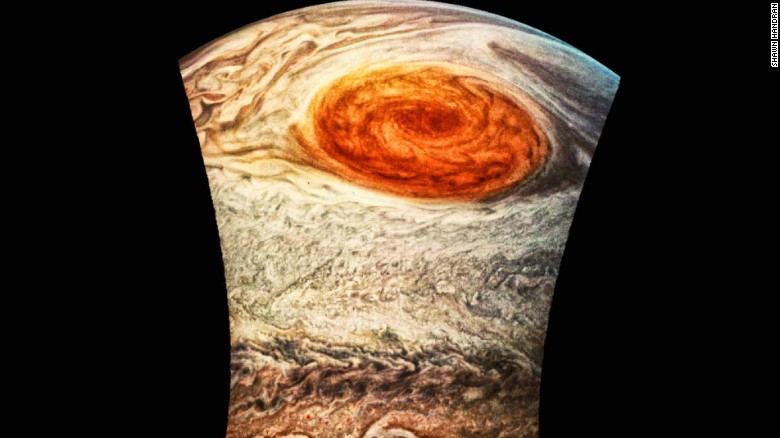NASA just
discharged photographs of Jupiter that are clearer and nearer than any time in
recent memory. From only 5,600 miles away (9,000 kilometers), NASA's Juno
mission offers another take a gander at the planet's celebrated Great Red Spot
storm. It's more than a spot, truly, as photograph examinations appear. Its
10,000 vast mists frame a tempest that is 1.3 times the measure of Earth. That
mileage is additionally 10 times the range that mists traverse in Earth's
biggest typhoons. NASA designed this examination of its own picture of Earth
with a picture of Jupiter taken by space expert Christopher Go. A lot of
research circling Jupiter is committed to understanding the spot. The pictures,
prepared by NASA researchers, demonstrate the distinctive mists and mind
boggling veins brightly delineating the eye of the tempest.
 |
| Saturn view |
"This great
tempest has seethed on the nearby planetary group's greatest planet for a
considerable length of time. Presently, Juno and her cloud-infiltrating science
instruments will jump into perceive how profound the foundations of this
tempest go, and enable us to see how this mammoth tempest functions and what
makes it so uncommon,"
Bolton drives a huge
group of 32 co-examiners and 28 key work force committed to the mission Juno,
which is the most distant sun oriented controlled shuttle from Earth. Made out
of eight instruments, the mission snapped photographs and data that will lead
scientists underneath the surface of the tempest, which has been observed since
1830. NASA says the spot might be more than 350 years old.Bolton drives a
gigantic group of 32 co-examiners and 28 key work force committed to the
mission Juno, which is the most distant sun oriented fueled rocket from Earth.
Made out of eight
instruments, the mission snapped photographs and data that will lead scientists
beneath the surface of the tempest, which has been checked since 1830. NASA
says the spot might be more than 350 years old.Data gathered can help enlighten
all the more concerning the beginning, development and current effect of
Jupiter. As the nearby planetary group's biggest planet, it can extraordinarily
impact the circle of articles in space, including planets and asteroids.There's
likewise would like to take in more about the planet's compound arrangement and
attractive field. NASA says Jupiter has a comparable organization to the sun
and that the two were conformed to a similar time. These pictures from Monday
are recently the start of researchers' anticipates Juno, which made it to
Jupiter on July 4, 2016 - about five years after the mission was propelled from
Florida in August 2011. Since its entry, it's gone around 71 million miles
around the planet.
 |
| satellite on saturn |
Bolton's group at
NASA's Jet Propulsion Laboratory in California is currently looking toward
Juno's next closeup flyby of Jupiter, slated for Sept. 1 this year./Orginal
post of Cnn/